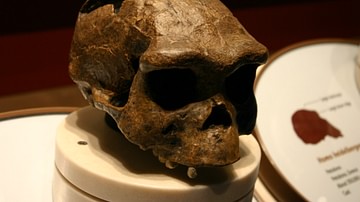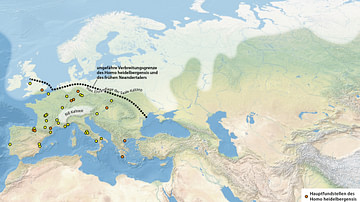Illustration
This map illustrates the early global migrations of Homo sapiens ("thinking man"), one of the most remarkable movements in human history. Beginning with small groups venturing out of ancestral Africa, these early humans spread across continents, encountering diverse landscapes and adapting with incredible resilience. Along the way, they coexisted and occasionally interbred with other hominids. By 20,000 years ago, Homo sapiens had reached the Americas, completing their journey to every inhabitable continent. These migrations fostered genetic diversity, sparked cultural exchanges, and laid the foundations for future civilizations.
About the Author
Cite This Work
APA Style
Netchev, S. (2017, May 09). Early Human Migration Across the Globe. World History Encyclopedia. Retrieved from https://www.worldhistory.org/image/6605/early-human-migration-across-the-globe/
Chicago Style
Netchev, Simeon. "Early Human Migration Across the Globe." World History Encyclopedia. Last modified May 09, 2017. https://www.worldhistory.org/image/6605/early-human-migration-across-the-globe/.
MLA Style
Netchev, Simeon. "Early Human Migration Across the Globe." World History Encyclopedia. World History Encyclopedia, 09 May 2017. Web. 13 Apr 2025.








